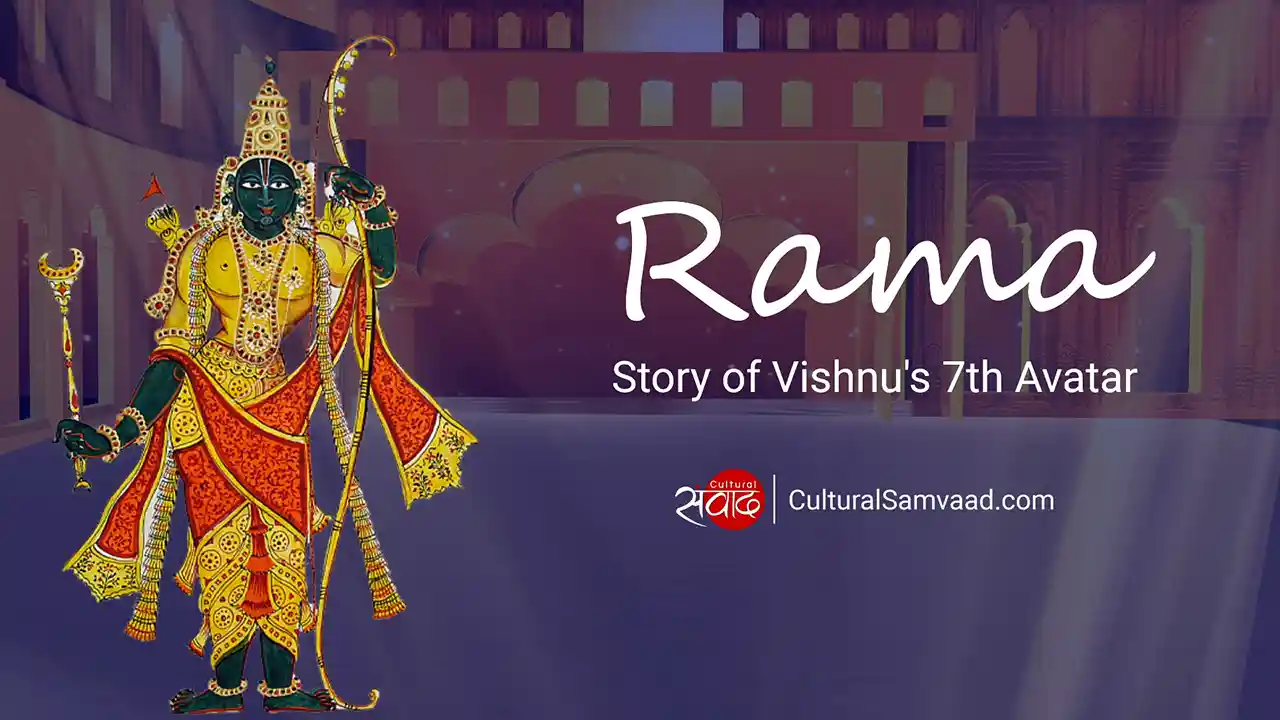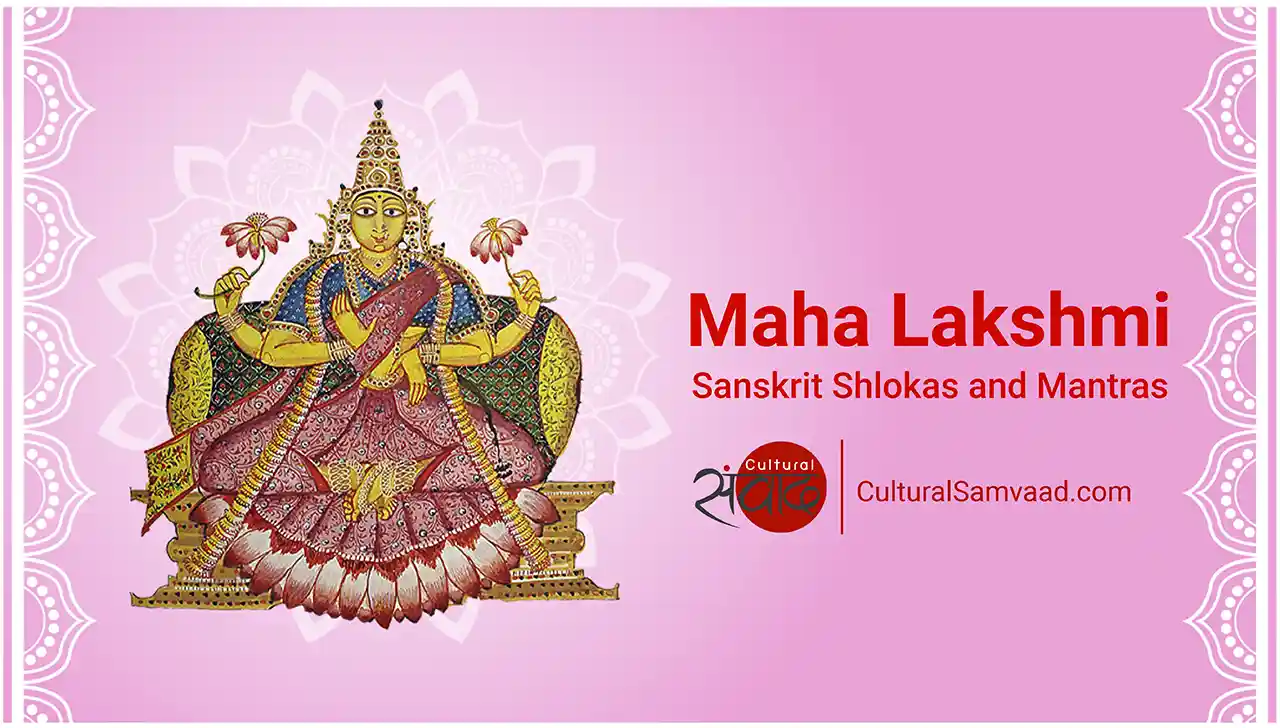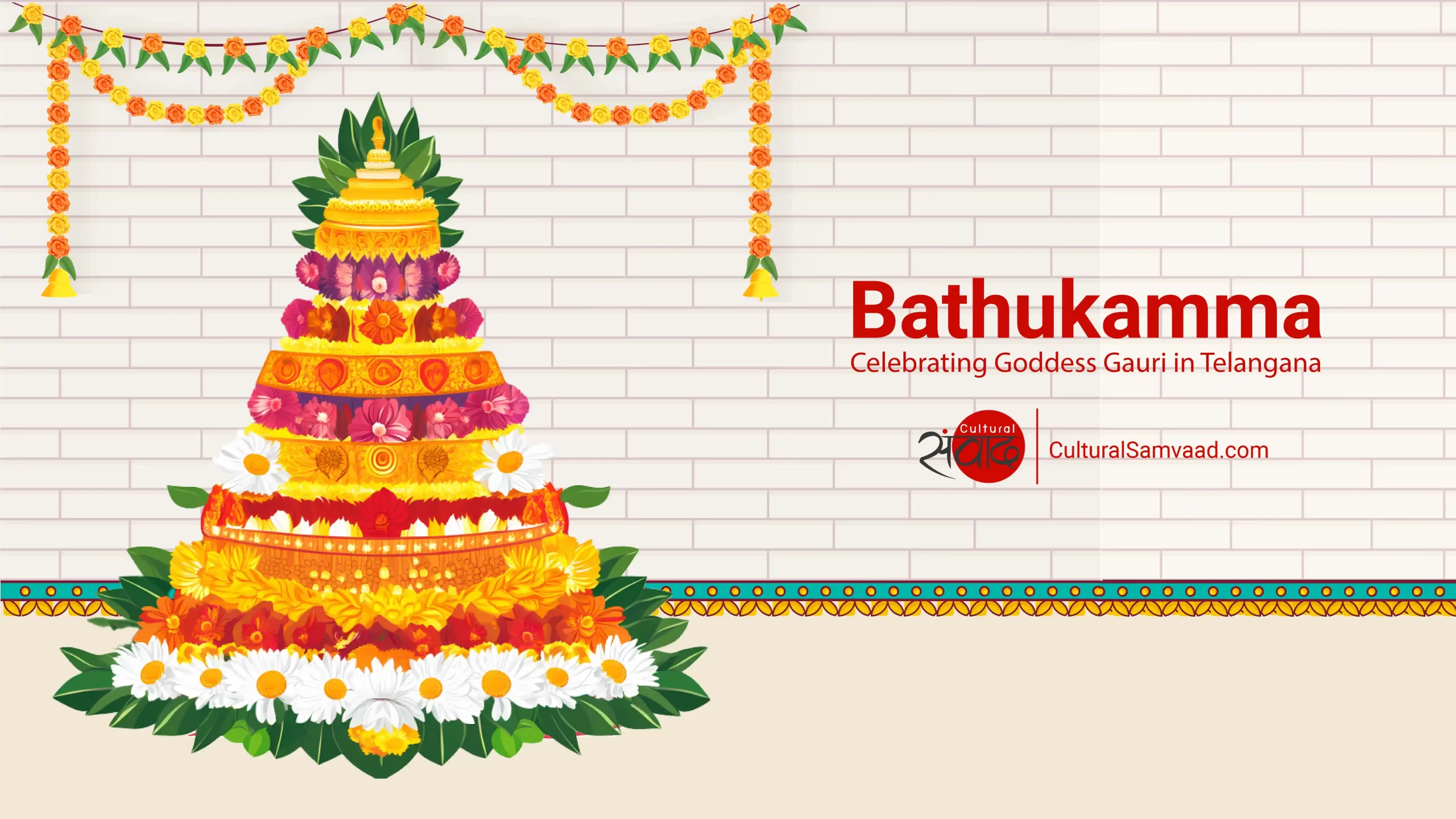Join Cultural Samvaad’s WhatsApp community
He is undisputedly regarded as the adikavi (आदिकवि – the first poet) in Indic and Sanskrit tradition and from Kalidasa to Bhavabhuti and from Mammata to Anandavardhana, the greatest of Sanskrit poets, dramatists and critics have venerated him with the loftiest obeisances. He is the one who gave Bharat and the world, an immortal adikavya (आदिकाव्य – the first poem) which has survived, thrived and ruled for millennia – Valmiki’s Ramayana. He is the one who is said to have played a pivotal role in the lives of Sita and her sons – Luv and Kush. He is Maharishi Valmiki (महर्षि वाल्मीकि) – a great sage who has exercised untold influence on the minds of Indians and people across large parts of Asia through his literary composition par excellence.
While not much can be conclusively averred about Valmiki’s life from a historical perspective, biographical elements can be gleaned from the Ramayana and later tradition. The full moon night of the month of Ashvina (शरद पूर्णिमा – generally falls in October) is commemorated as his birth anniversary – Valmiki Jayanti (वाल्मीकि जयन्ती).
Valmiki’s Ramayana – A Brief Introduction
The Ramayana is regarded as a part of itihaasa (इतिहास – the word literally means – thus it happened) or traditional history genre in India. The Mahabharata is the other composition that falls in this genre of untold importance in Bharat. While scholars have debated whether Valmiki’s Ramayana is the extant first telling of the Ramkatha (रामकथा) or the Dashratha Jataka is an older retelling, most tend to favour Valmiki’s Ramayana. This piece is based on the premise that it is Valmiki’s monumental work that takes the crown.
Know More: The Ramakatha Tradition
In contemporary times, the popular version of Valmiki’s Ramayana has 24,000 shlokas or verses which are divided into 7 kandas ( काण्ड – part or book). It is obvious from the existence of multiple recensions (the Northern Recension and the Southern Recension are the main recensions) and ‘a detailed study of the language, grammar, tropes, themes and religions and philosophical values’[i] that the Ramayana as we know it today expanded over several centuries (600 BCE to 400 CE are the outer limits as per estimates). Many scholars also surmise that large parts of the first kanda –Bala Kanda and the last kanda in toto – Uttara Kanda are interpolations.[ii] That said, ‘the compact vocabulary and style indicate that the core of the text was the work of a single individual, traditionally identified as Valmiki’[iii] and our note explores why Valmiki aspired to compose this timeless work and how he was inspired to compose the adikavya. The answers are primarily drawn from the first few sargas ( सर्ग – chapters) of the Bala Kanda that have been profusely referred to in later tradition while they may admittedly not be a part of the oldest composition.
Valmiki’s Ambitious Aspiration – The Search for the Most Exalted Among Men: रामो विग्रहवान् धर्म: |

Image taken from Ramayana, Bala Kanda.
Originally published/produced in Udaipur, 1712.
The adikavya Ramayana opens in a setting in Maharishi Valmiki’s ashrama which is reminiscent of the Upanishads and a dialogue that is quintessentially a traditional guru-shishya dialogue that defines Bhartiya sanskriti (संस्कृति – culture). The great sage, the knower of all the three worlds, Narad Muni visits Valmiki who is eager to hear of He who possessed an almost impossible amalgamation of divine qualities. Specifically, the adikavi Valmiki wanted to know of a paragon of greatness who was endowed with the following 16 qualities.
- गुणवान् – one with virtuous qualities
- वीर्यवान् – one who is not perturbed
- धर्मज्ञ: – one who knows Dharma
- कृतज्ञ: – one who is immensely grateful
- सत्यवाक्य: – one who speaks the Truth
- दृढव्रत: – one who follows the Dharma
- चारित्रेण युक्त: – one who is endowed with good conduct
- सर्वभूतेषु हित: – one who is given to the wellbeing of all living creatures
- विद्वान् – one who knows all that there is to know
- समर्थ: – one who is competent
- एकप्रियदर्शन: – who is pleasing to look at
- आत्मवान् – one who is self-composed
- जितक्रोध: – one whose anger is only directed towards those who deserve punishment
- द्युतिमान् – one who is brilliant and lustrous
- अनसूयकः – one who is not jealous
- देवा: बिभ्यति – one who is feared even by the Devas when provoked to war
As expected, Narada goes on to narrate the story of the King of Ayodhya, the scion of the Ikshavaku clan, the son of Kaushalya and Kaikeyi, the beloved husband of Janaka’s great daughter Sita, the one and only Shri Rama.
विष्णुना सदृशो वीर्ये सोमवत्प्रियदर्शनः ।
कालाग्निसदृशः क्रोधे क्षमया पृथिवीसमः ।।Valmiki Ramayana – 1.1.18।।
Sri Rama is like Visnu in valour, like the Moon in pleasing appearance, like the all-consuming fire in anger, like the earth in patience, like Kubera in benevolence and like the Sun in steadfastness.
Valmiki’s ambition was to immortalise the timeless story of this very Shri Rama and that is the context in which the Ramayana should be read, understood and appreciated.
Valmiki’s Unlikely Inspiration – The 2 Krauncha Birds: शोकः श्लोकत्वमागतः|

Image taken from Ramayana, Bala Kanda.
Originally published/produced in Udaipur, 1712.
With the words of Narad Muni still ringing in his ears, Maharishi Valmiki went to the bank of the River Tamasa to perform his ablutions in her pleasant waters. He happened to behold a pair of melodious, inseparable krauncha (क्रौंच) birds who were intoxicated with love and were revelling in each other’s company. And then, tragedy struck. A cruel hearted hunter (निषाद – nishada) struck down the male bird who fell on the earth, drenched in blood. The female bird had now been separated from her companion forever. Her melodious songs transformed into piteous wails and Valmiki’s heart was filled with karuna (करुणा – compassion) at this ghastly incident.
मा निषाद प्रतिष्ठां त्वमगमश्शाश्वतीस्समा: ।
यत्क्रौञ्चमिथुनादेकमवधी: काममोहितम् ।।Valmiki Ramayana – 1.2.15।।
Valmiki’s shoka (शोक – sorrow or grief) stirred the innermost recesses of his soul and led him to spontaneously and effortlessly utter the above shloka (श्लोक) in anushtubh chandah (अनुष्टुप् छन्दः – one of the most important metres in Sanskrit) traditionally considered as the first outpouring of poetry in post-Vedic Sanskrit literature.
The shloka has been interpreted and translated variously but for the purposes of our discussion, it is sufficient to conclude that the verse is in the nature of a curse directed at the violent hunter who killed one bird of the passionate couple without any reason. He was doomed to permanently lose his pratishtha (प्रतिष्ठा – position) and peace of mind for as long as he lived.
This compassionate and poetic utterance not only earned Valmiki the title of ‘Adikavi’ but also set the tone for the Ramayana which is considered to be the epitome of karuna rasa – रामायणे हि करुणो रस: (Anandvardhana’s Dhvanyaloka). This episode highlights Valmiki’s certain exalted characteristics of Valmiki’s mind which lent to the greatness of the Ramayana. His unusual sensitiveness to sorrow and injustice ‘brings with it a code of virtue to mete out at least poetic justice in order to set a balance between good and evil’[iv] and it is this poetic justice that has kept the Ramayana alive in our imagination and hearts and minds.
Returning to the story, Valmiki was perturbed with what had transpired. In his mind, his anger (which arose as a consequence of his compassion) seemed to have gotten the better of him. The great Brahma, the resplendent creator of the universe, descended to Valmiki’s ashrama and comforted him by stating that he had set the wheel of poetry rolling. Prajapati Brahma instructed him to narrate the pleasing and meritorious legend of the virtuous and intellectual Rama (रामकथा) as he had heard from Narada Muni. The great Valmiki resolved that he would compose the Ramayana in melodious, free-flowing verses and the rest as they say is history.
यावत् स्थास्यन्ति गिरयस्सरितश्च महीतले ।
तावद्रामायणकथा लोकेषु प्रचरिष्यति ।।Valmiki Ramayana – 1.2.36।।
यावद्रामायणकथा त्वत्कृता प्रचरिष्यति ।
तावदूर्ध्वमधश्च त्वं मल्लोकेषु निवत्स्यसि ।।Valmiki Ramayana – 1.2.37।।
Brahma states – As long as the mountains and rivers exist on this earth, the legend of Ramayana will flourish in this world. And as long as the story of the Ramayana composed by you (Valmiki) is remembered in this world, you will flourish in the heavenly world, in the nether world and in Brahmaloka (the world of Brahma).
Endnotes
[i] Bhattacharji, Sukumari. “A Revaluation of Valmiki’s ‘Rama.’” Social Scientist, vol. 30, no. 1/2, 2002, pp. 31–49.
[ii] For more information, please refer to the Critical Edition of the Ramayana prepared by M.S. University of Baroda.
[iii] Singh, Upinder. 2024. A History of Ancient and Early Medieval India: From the Stone Age to the 12th Century. Pearson Education India.
[iv] Bhat, G. K. “The Genius of Valmiki.” Annals of the Bhandarkar Oriental Research Institute, vol. 67, no. 1/4, 1986, pp. 219–31. Bhat notes that the event reveals ‘(i) A deep concern for beauty in nature and in life, and a passionate belief that no one has any right to destroy such beauty. (ii) A heart capable of such sensitive understanding and sympathy as could be moved profoundly even at a distant happening with which one is not personally concerned. (iii) Above all, an understanding of sorrow in human life and the emotional compulsion to respond to it. (iv) And the firm conviction that greed, selfishness, or any action against the moral and religious precepts of life are sins which must receive punishment. Innocent victims of cruelty, vengeance, aggrandizement must receive protection and those who do wrong to them ought to suffer the fury of hell. There is no mercy for those who sin against humanity.’






Add comment